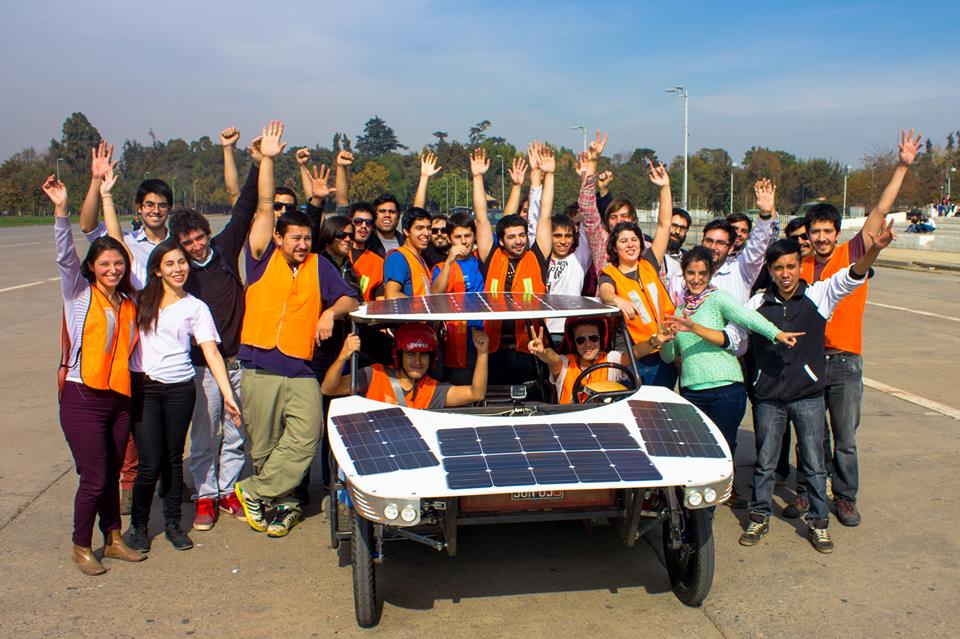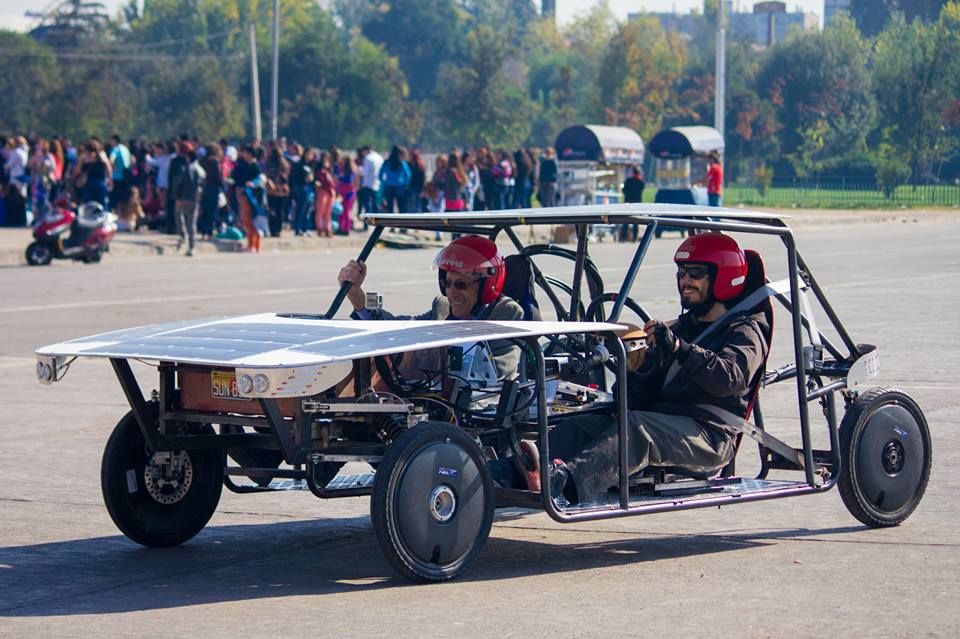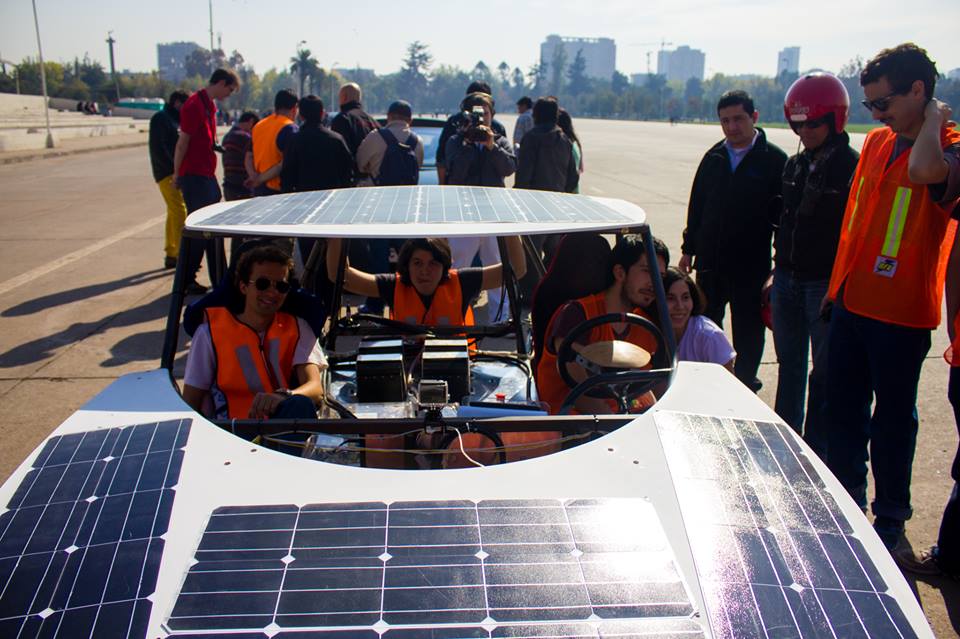
The 4-wheeled solar car – created by students – shows that it is capable of working in equal conditions against the sophisticated Tesla Model S, a unique car in South America.
The EOLIAN project was born in 2007 as a school project, led by the Mechanical and Electrical Engineering Department of Universidad de Chile – an initiative supported by the Engineering Complex System Institution – which is meant to be a cradle of innovation. In November, the story which began 7 years ago with the construction of the EOLIAN 1 will be a milestone when the EOLIAN 4, the first two-seater all-terrain solar car in Latin America and the Caribbean, competes in the Atacama solar race 2014.
By then, the investment will have reached a considerable amount of 100 million CLP. However, this sum is worth it considering that it is a car conceived as an alternative to combustion engine vehicles, and that it is capable of travelling long distances as it will be demonstrated in the first solar car race in the north when the car covers a distance of 1,200 kilometers.
“It is not a tricycle; it is a 4-wheel car. It doesn’t need to be towed when there are track problems. The challenge is that it resembles more and more an everyday car. We believe it has the potential to become a commercial car,” says Rodrigo Palma, Director of the Energy Center and researcher of the Engineering Complex System Institute.
How is the EOLIAN 4
How does the EOLIAN 4 work? It uses photovoltaic cells that transform solar radiation into electric power, with a total power of 900 W in broad daylight. It uses lithium-ion batteries and two engines with 7 KW (9.3 hp) max power, 55 Nm of torque, 400 km of autonomy and a speed that reaches 100 km/h. Since it does not consume fossil fuels, it does not emit Co2; therefore, its carbon footprint is very low.
Now that the solar panels, the directional suspension system and the basic fairing have been tested, the EOLIAN 4 is almost ready, not only for the most important solar race in Latin America, but also to travel from Arica to Santiago to visit several schools and to show the advantages of the use of solar energy.
The project’s team, which is coordinated by Rodrigo Palma along with a professional team of the Energy Center and the Department of Electrical Engineering (José Antonio Marín, Mónica Zamora, Vladimir Ovalle, Bernardo Severino) is formed by students, staff members and academicians of Electrical, Mechanical and Industrial Engineering, Business Administration, and Graphic and Industrial Design. Its development was possible due to the support of research centers and companies that have seen the potential that the new technologies have and their positive impact in the country.





